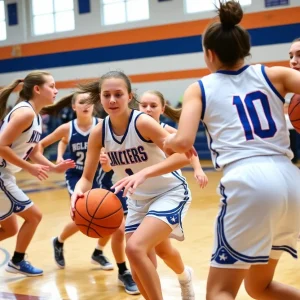Asheville Families Face Challenges Post-Hurricane Helene
Asheville, North Carolina, is a city known for its beautiful natural landscapes and welcoming community spirit. However, following the impact of Category 5 Hurricane Helene, the city is grappling with a significant challenge that has left 76,000 students out of school. This situation is not due to a lack of desire to learn; it stems from the inability to provide safe drinking water and the urgent need for road repairs.
After the Storm: Schools Closed and Families Displaced
Once Hurricane Helene roared through the southeast and weakened to a tropical storm, its residual effects were still quite powerful, especially in Asheville. According to reports, communities are still in recovery mode, with many homes and infrastructures damaged. Residents like Ashley Mosley have found themselves displaced, seeking refuge with family—she’s currently at her mother’s home in Mississippi along with her two children. “Asheville is a place that people move to get away from that – from hurricane-prone areas or wildfire-prone areas. I think none of us ever saw this coming,” she shared.
The Impact on Education
While Asheville City Schools announced a reopening date of October 28, the time spent away from classrooms has raised concerns among educators and parents about student learning. The challenges faced by these students are particularly pronounced given the socio-economic difficulties some families encounter. Data from the University of North Carolina at Chapel Hill reveal that nearly 1,800 kids in the Asheville school district are economically disadvantaged, meaning their family income is below 185% of the federal poverty line. This further complicates the situation as these students may not have the resources to recover quickly.
Addressing Climate Change Conversations
Kimberly Dechant, a spokesperson for Asheville schools, highlighted that there hasn’t been an easy discussion regarding climate change and its increasing impact on local schools. “We haven’t had an intentional conversation about how climate change is real, and let’s talk about the different ways it’s impacted our schools from the temperature recess to the temperature for football practice and field hockey practice,” she noted. In response to the chaos, school district officials are already busy writing grant proposals to provide after-school tutoring opportunities for students once they return to classes.
Unique Challenges for Families
The lack of daily routine, especially for children with special needs, poses an additional challenge for families. Elizabeth Steere, a mother of two boys, expressed her concern for her son, who is autistic. “For autistic kids, routine is everything. Routine is king, and school offers routine,” she explained. Her worries are shared by many parents who understand that predictability plays a crucial role in their children’s well-being.
Moving Forward Together
Despite the challenges, Asheville schools remain optimistic about recovering from the storm’s impact. Administrators are actively working to ensure students have access to clean drinking water, which is a critical step towards reopening schools safely. With 31 public school districts in western North Carolina affected—impacting approximately 205,300 students—the path to recovery will require collective efforts from the entire community.
The Road Ahead
As residents of Asheville navigate this aftermath, the importance of support networks and community collaboration is highlighted. A study from the University of North Carolina at Chapel Hill asserts that low-income families face unique challenges during such crises. Vulnerabilities related to food insecurity and housing instability are only intensified, making recovery a tougher endeavor for those already experiencing hardships.
As the community comes together to rebuild and heal, the hope remains strong that Asheville students will soon return to a supportive and nurturing environment, ready to grow and learn anew.






